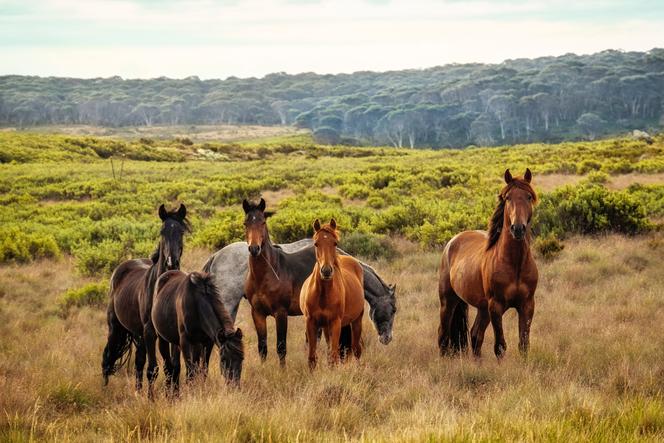

LETTER FROM SYDNEY

Australia has never held back on using drastic measures to protect its unique ecosystems from exogenous invasive species and even deploys helicopters with professional shooters aboard to eliminate thousands of camels, pigs and deer from the air. The one exception has been Kosciuszko National Park in New South Wales where, despite protests from scientists and conservationists, wild horses, have been relatively protected for the last two decades in the name of cultural heritage.
On Friday, October 27, the local government finally agreed to resume aerial slaughter in order to preserve endemic flora and fauna. But the wild horses, nicknamed "brumbies," and descendants of the horses that arrived with the first settlers from England in 1788, that were then rewilded – have strong supporters who have no intention of giving up in the culture battle stirring up southeast Australia.
"They deserve better than being left to die an agonizing death," said Jill Pickering, president of the Australian Alliance for Brumbies, shortly after the announcement. On the organization's website, she writes that these animals, "iconic" to Australia, and have given their names to "rugby teams, army units, on paper currency (...) [and were] also featured at the opening of the Sydney Olympics."
In Kosciuszko National Park, in the Australian Alps 500 kilometers southwest of Sydney, settlers used these horses for transport, rounding up livestock and other tasks essential to life in these remote regions. Brumbies symbolize freedom, independence and tenacity in the face of an often hostile environment, and are part of Australia's outback mythology. They have been celebrated in local literature and folklore, like in the poem The Man from Snowy River by Banjo Paterson, one of the country's greatest writers.
"For some, these horses are a reminder of those days when English colonists exploited and enriched themselves from the land. They represent European Australians taming the land. It's the white man's imprint on the landscape. The subtitle to my book is The Battle for the soul of Australia (...) This has long been a culture war over symbols of pre- and post-colonial Australia," said Anthony Sharwood, author of The Brumby Wars (Hachette Australia, 2021).
Before it was colonized, no hard-hoofed animal had ever set foot on the continent, where endemic species such as the kangaroo had paws. The Australian Alps were mainly populated by small animals; the colonizers’ imported animals – cows, sheep and horses – had a deleterious impact on the country’s fragile ecosystems. To protect the environment, the authorities created the Kosciuszko National Park in 1967, one of the largest in the country. But after the ban on aerial slaughter in 2000, the brumby population increased to over 18,000 animals, which have continued to ravage the mountains, trampling watercourses and destroying the habitats of species unique to the area and endangering some of them.
You have 45% of this article left to read. The rest is for subscribers only.
